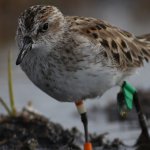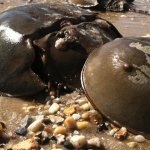High of 55 F, with the wind blowing at 25 miles per hour. That’s the predicted temperature today in Rio Grande, Argentina in the region known as Tierra del Fuego¹, where the long-distance rufa Red Knot spend these months that we call winter. Sounds like a pleasant late fall day, but there at the end of the Earth where it is near constant daylight, it is summer.
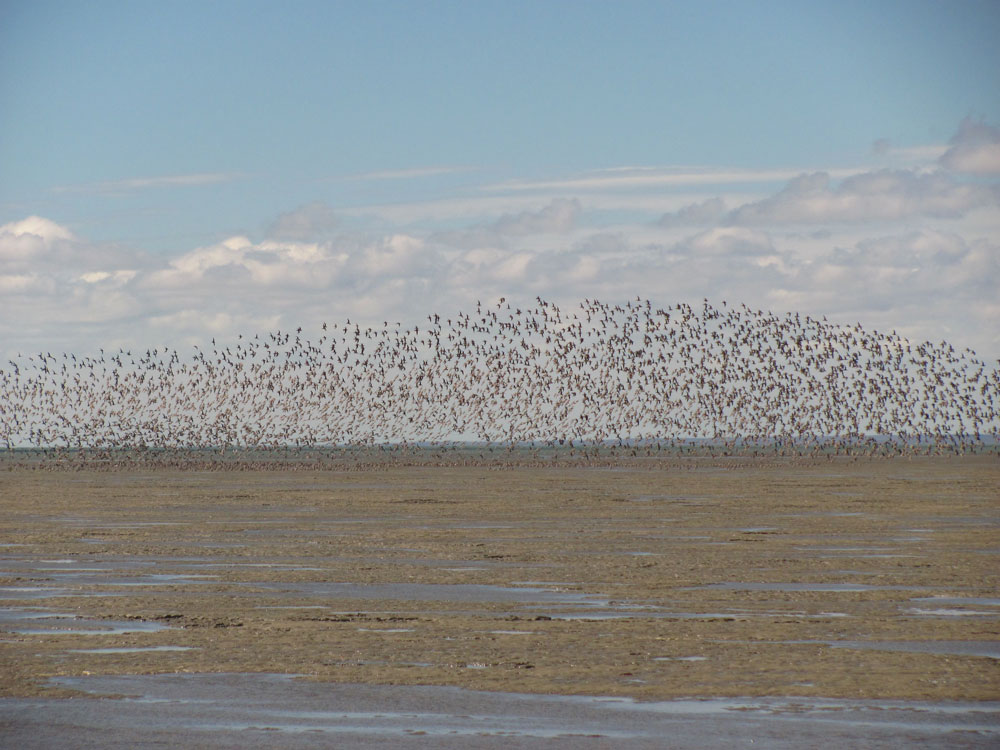
A large flock of Red Knots flying over the restinga in Tierra del Fuego. Photo: Patricia González.
It is said that Red Knots make the trek from pole to pole so they are in constant summer. At first that sounds lovely, but the summer that they seek is usually a harsh one with challenging conditions. Summer means long, long days, and Red Knots can usually fit in at least two low tide sessions a day during these long days of summer at Tierra del Fuego.
Adding to their motivation is the plentiful food of the area. Instead of mud flats appearing as the tide recedes, the densely packed restinga is exposed. Restinga is formed when the wind brings the reddish soil from the nearby plains and it is settles to the water where it is packed down, to form a not soft, but not hard sea floor. When the 30 foot tide is out, plentiful mussel spat, worms, and clams are exposed. And so Red Knots spend their second summer feeding on the restinga.
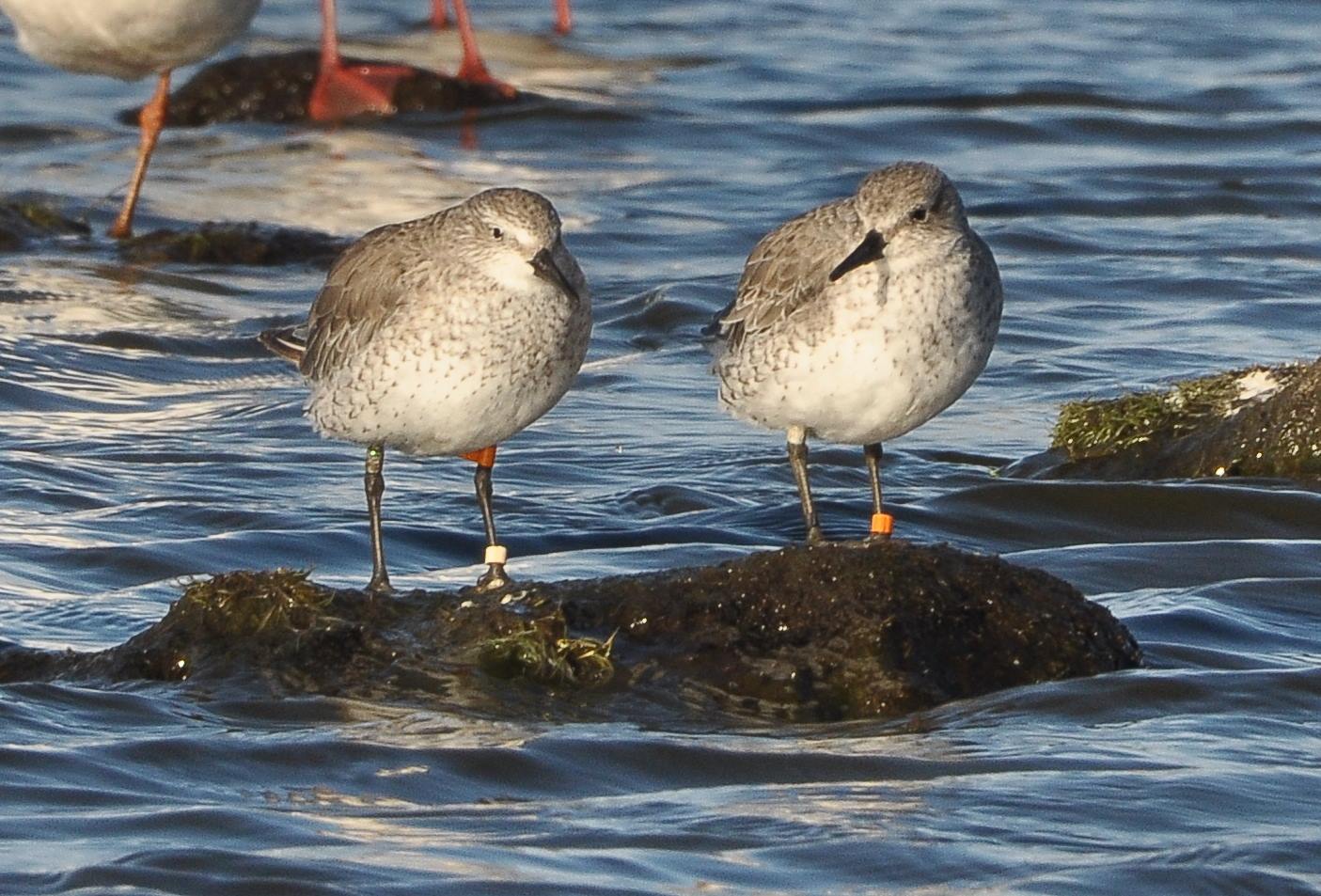
Wintering Red Knots. Photo: Luis Benegas.
The Red Knots are able to feed mostly undisturbed on the resting, but even this remote location has threats. The good news is that the recent threat of sand-mining is resolved.
In a few weeks, the days will shorten and the red knots will prepare to fly north. It is now that the true marvel of the Red Knot begins. First, they will put on fat until they are chubby little balls. That fat gives them reserves of energy and is able to release water as it is metabolized, allowing longer non-stop flights. A few days before they are ready to leave organs begin to shrink, including the gizzard which aids in the digestion of food such as the hard shells of mollusks. This change is also why the horseshoe crab eggs on the Delaware Bay are so critical. These long-distance Red Knots need the easy to digest horseshoe crab eggs.
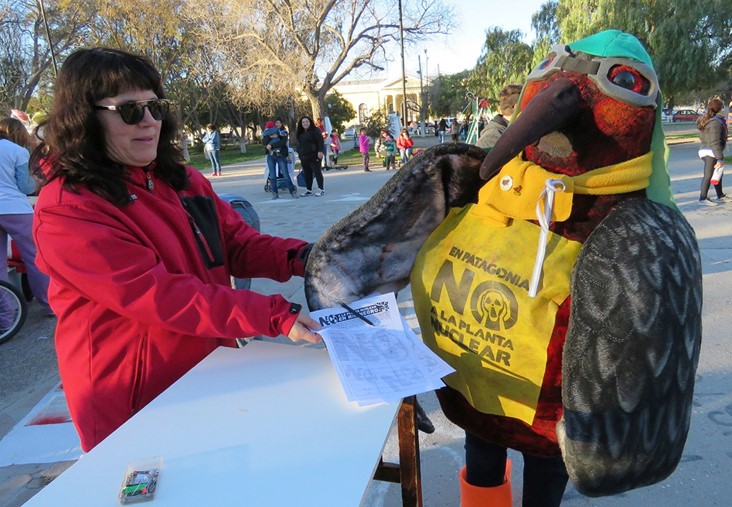
Fabian takes action for fellow Red Knots. Photo: Mirta Carbajal.
Their first stop might be the beaches of San Antonio Bay¹. There is restinga here too. But unlike Rio Grande, there are quite a few other beach users— people to be precise. Remember it is summer so Red Knot beach season is also peak beach season for residents in the San Antonio Bay area. The beach and restinga are crowded with people, dogs, and ATVs. But often it is difficult, with birds struggling to find space to feed and rest. The Red Knots do have help, just like on Delaware Bay stewards or docents educate and inspire people to reduce disturbance. There is even a special giant Red Knot, Fabian, that helps out with song, dance, and fun.
From there they might make another stop at Lagoa do Piexe¹ in southern Brazil. The lagoon, that gives Lagoa do Piexe its name, serves as resting stop for many species of migrating shorebirds. Here the Red Knots will add snails to their diet. With a change in protected status, wind farms, and mining threats on the horizon, this pit stop also serves as another reminder of the many possible threats that are faced during migration.
Not all rufa Red Knots winter in Tierra del Fuego. Some will winter in northern Brazil or southeastern United States. No matter where they winter they will face many threats on their journey. Here on the Delaware Bay we cannot control hurricanes, bad insect season in the Arctic or human disturbance in San Antonio Bay. But we can make sure they have the best habitat when they are here.
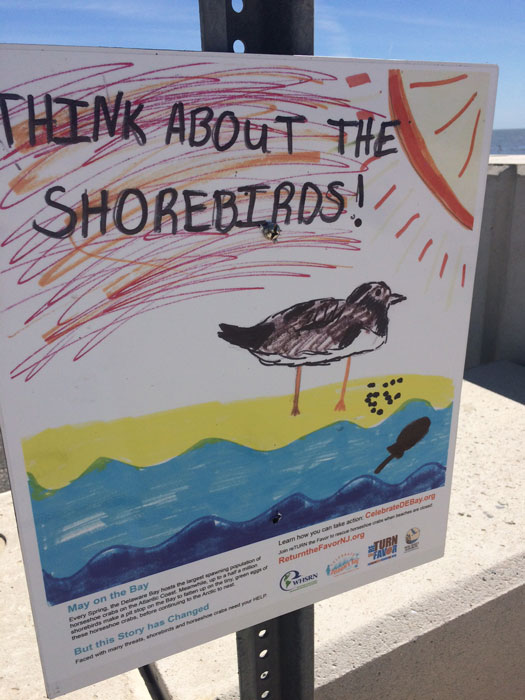
Student artwork on the Delaware Bay. Photo: Laura Chamberlin.
From Lagoa do Peixe, the next stop is Delaware Bay, nearly 6,000 miles away, where the horseshoe crab eggs and many humans taking action will be waiting for them. To find out how you can join this team of dedicated individuals, visit our Take Action page.
If you are looking to learn more, we recommend the resources we used for this blog post: Moonbird: A Year on the Wind with the Great Survivor B95 by Phillip Hoose and The Narrow Edge: A Tiny Bird, an Ancient Crab, and an Epic Journey by Deborah Cramer.
¹The Atlantic Coast of Tierra del Fuego, San Antonio Bay, and Lagoa do Peixe are all WHSRN sites, like Delaware Bay, and they were all designated in part for the populations of rufa Red Knots that use their shores.
Cover Photo: Shorebirds at Bahía Lomas, Chile in December. Photo: Patricia González.





